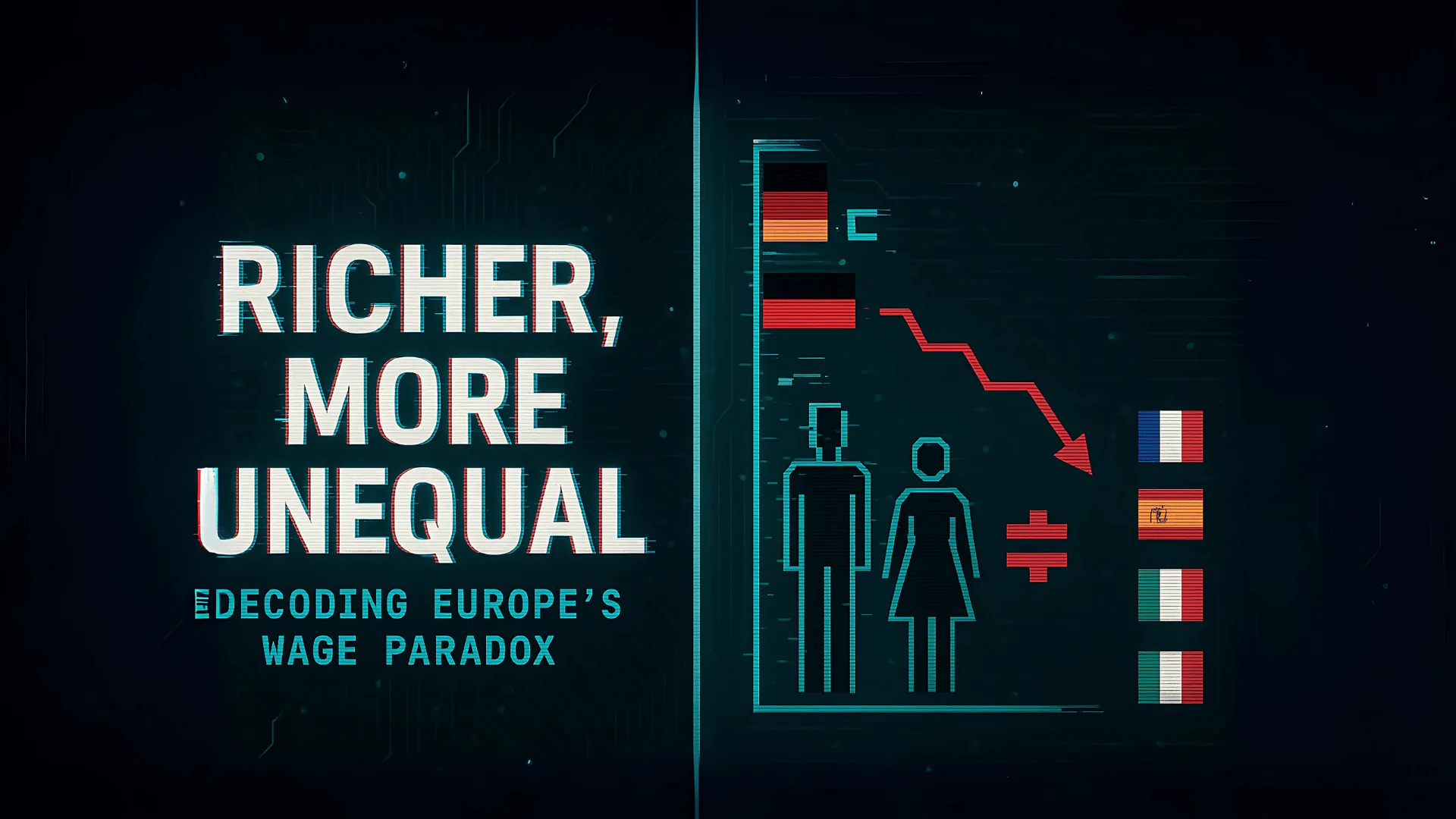Richer, More Unequal:
The Democratic and Wage Paradox in Europe
Social Progress: A perspective from Cybermediateinment through the lens of FOLLOW THE ALGORITHM
Intro Summary
They told you Europe is a model of progress? Look deeper into the algorithm.
Behind every narrative of growth, well-being, and equity, there’s a systemic bug few dare to decode: as wealth increases, so does the gap. It’s not just an economic imbalance—it’s a cultural anomaly, a short-circuit exposing how fragile and programmed our idea of “justice” truly is.
If you believe GDP and social justice walk hand in hand, get ready to uninstall a toxic belief.
In a continent that calls itself progressive and inclusive, the reality told by the numbers is different. And it’s not a story Europe should be proud of.
When we compare average income and gender pay gap in relation to cost of living, a disturbing correlation emerges: the richer a country, the greater the wage gap between men and women. This systemic distortion forces us to question the very idea of progress.
The data speaks: The myth of false progress
🇩🇪 Germany – Avg. purchasing power: €45,393. Gender pay gap: -17.6%.
🇫🇮 Finland – Income: €44,200. Gap: -16.5%.
🇫🇷 France – €35,128, with a gap of -15.4%.
🇪🇸 Spain – €34,798, gap down to -8.9%.
🇮🇹 Italy – Avg. income: €30,500. Gender gap “contained”: -5%.
Data & Visualization

Visualization by Cybermediateinment x FOLLOWTHEALGORITHM
Gender Pay Gap (%) and Average Income (€) in key European countries: as wealth grows, so does the gap. Source: Eurostat data 2024.
Looking closely, it is precisely where wealth grows that distances increase. This evidence raises crucial questions about the relationship between economic development and social equity.
Technology is not progress, more wealth is not more justice
The dominant narrative taught us that well-being and justice go hand in hand. But the numbers disprove this illusion. In countries with high purchasing power, the gender gap grows alongside GDP. It’s a short-circuit involving not only politics and economics, but also the world of work and the cultural architecture of our societies.
Women, still today, are the most penalized by the market. Despite theoretical advances and institutional campaigns, the gap remains. Or worse: it widens.
The real question: what do we do with wealth?
If progress doesn’t include, then what kind of progress is it? Perhaps the most uncomfortable reflection is this: in economically weaker countries, disparities tend to shrink. Not out of virtue, but because there’s no margin. It’s a fragile, yet significant, balance.
“The poorer we are, the more similar we become.”
A bitter conclusion, yes, but a useful one. Because it forces us to look beyond the figures and question how we distribute resources—not just how much we produce.
Decode. Resist. Reclaim.
In this algorithmic distortion of European society, the gender gap is the result of a system programmed to replicate inequality under the surface of progress.
FOLLOWTHEALGORITHM doesn’t just observe: it decodes the paradox, resists the automatism of dominant narratives, and claims the need for a new ethical code in wealth distribution.





